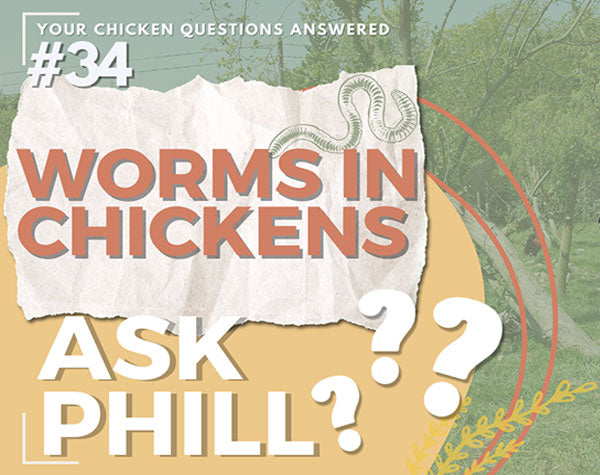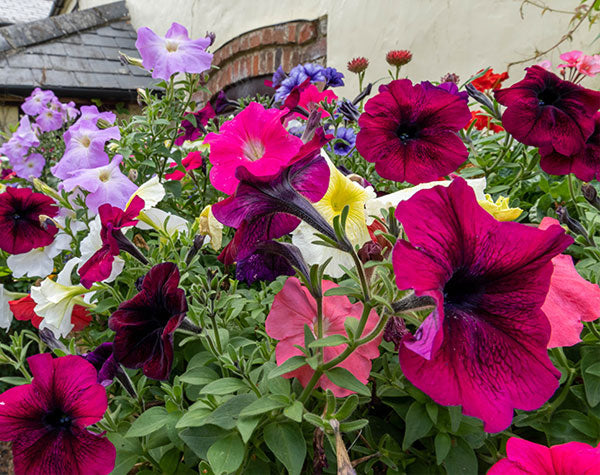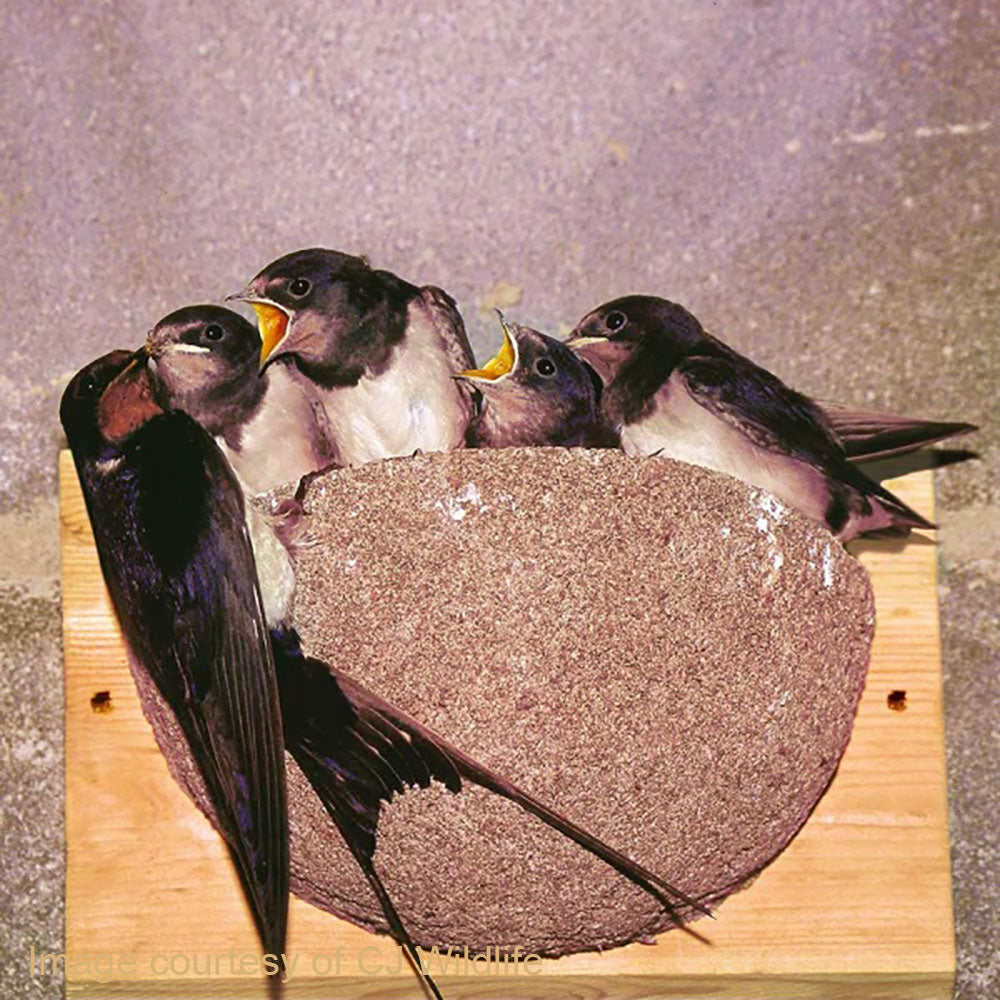
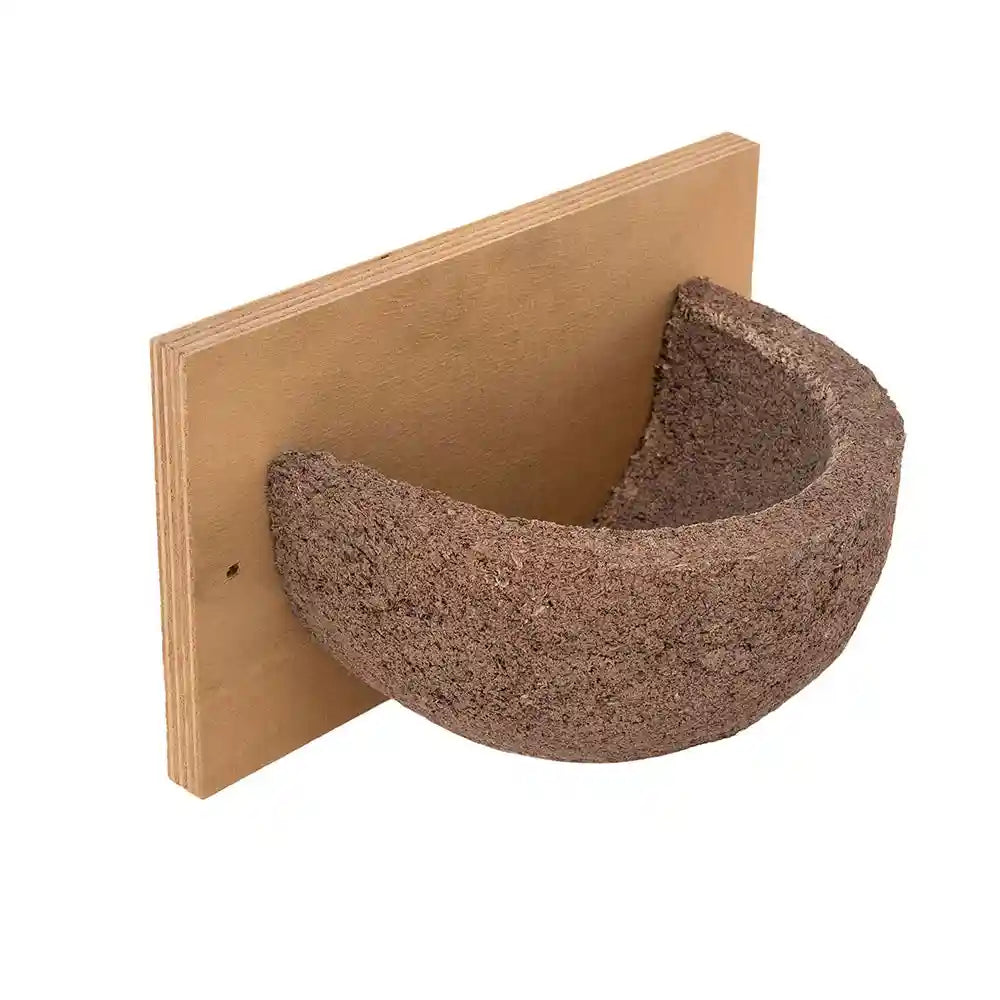
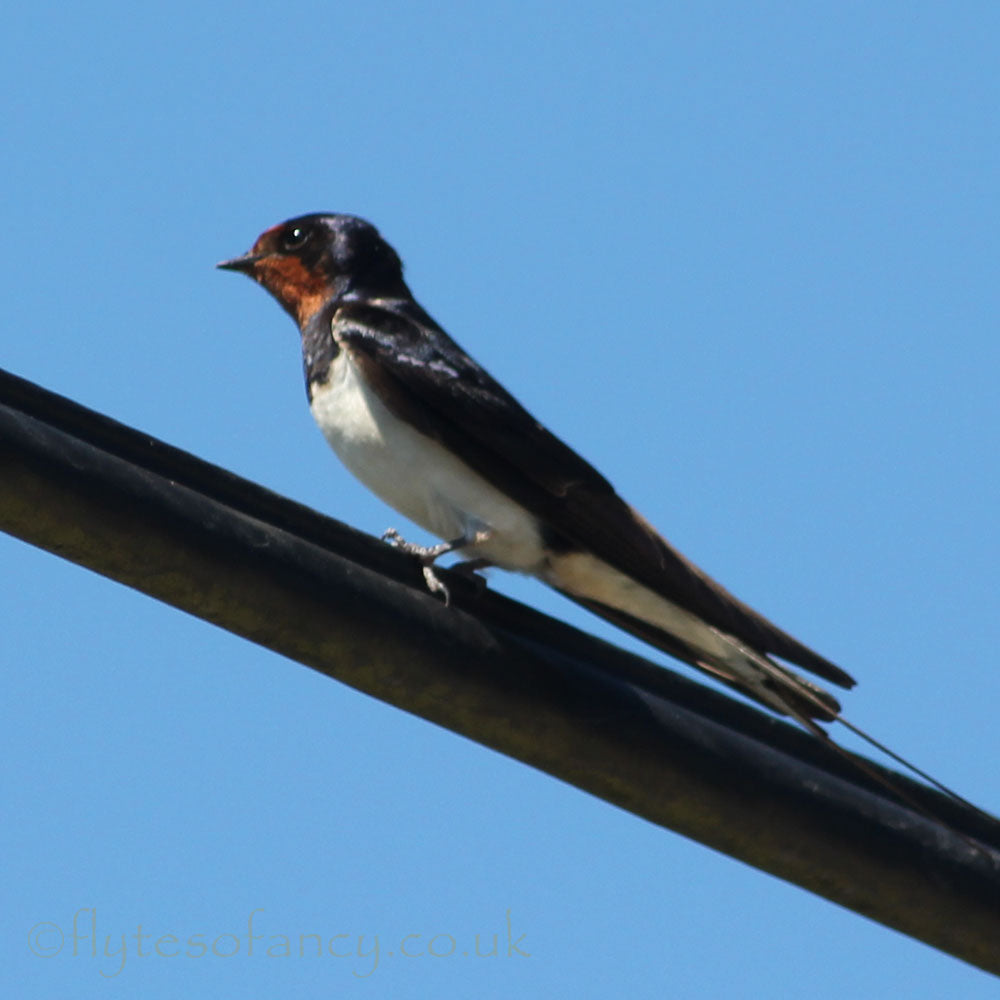
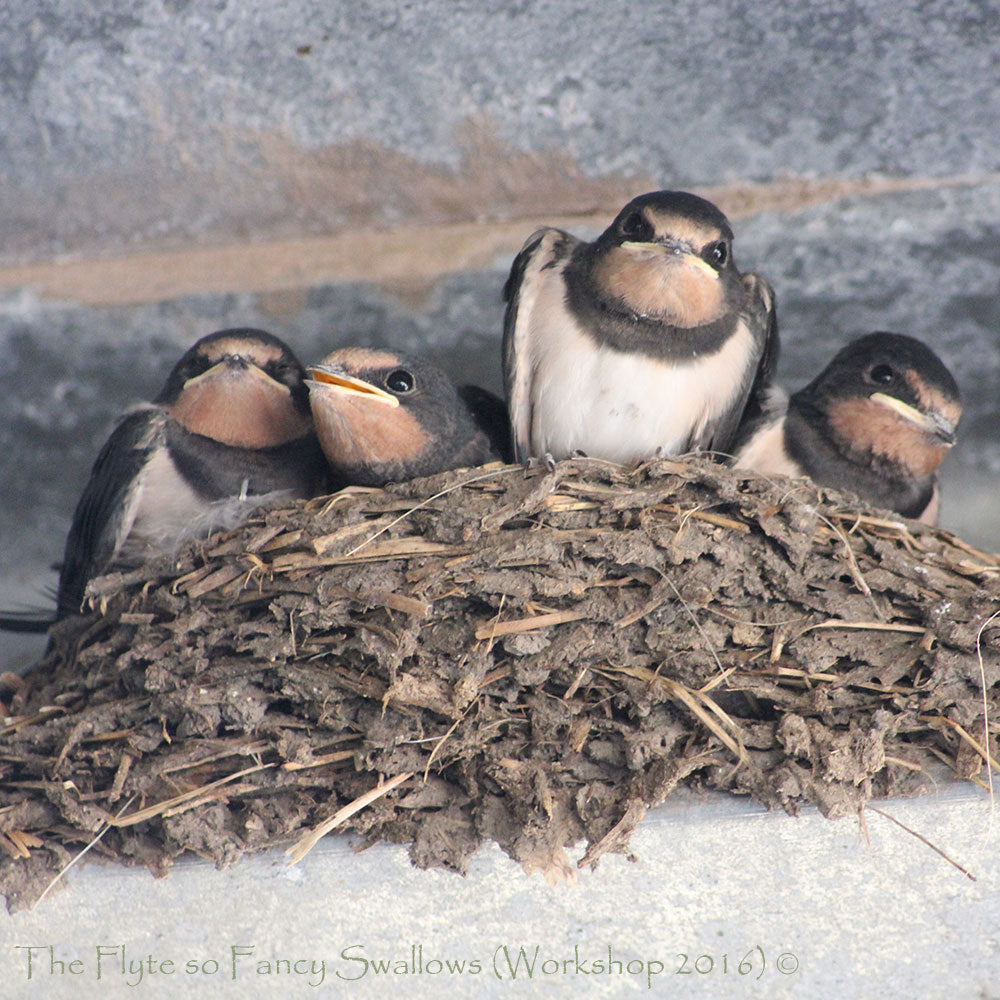
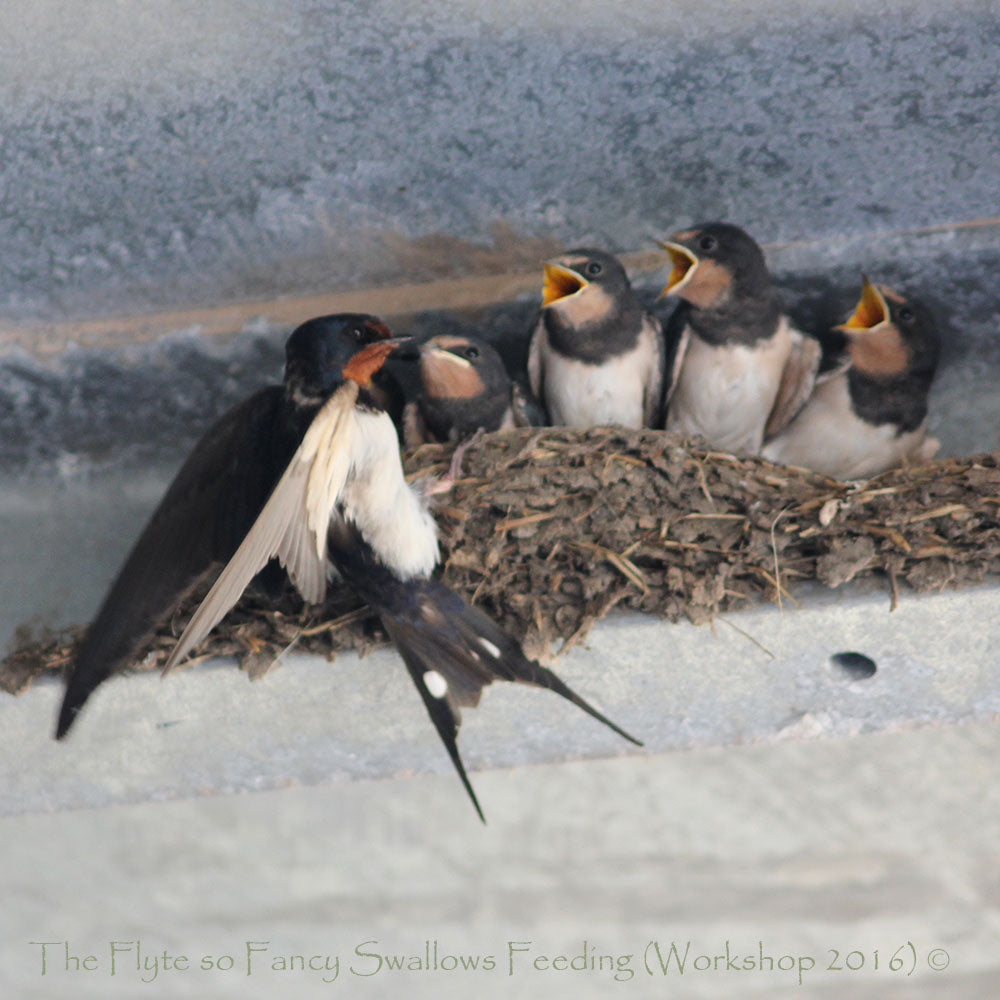
CJW Swallow Nest Bowl
A Swallow Nest Bowl by CJ Wildlife. A purpose made, easy to install, nesting place for Swallows.
The nest bowl is made of woodcrete to best replicate their nests and therefore encourage these gorgeous summer visitors to stay and breed each season.
Get ready for the arrival of Swallows in Spring by placing these little nest bowls in an enclosed or sheltered area like an outbuilding or under high eaves. Install by end of February as, in the south, they can arrive in March.
By installing these nesting bowls you will be helping them survive their first weeks of breeding. Made of moulded grey woodcrete this nest is attached to a plywood backboard.
Their first priority is finding a nesting place but, with the demolishing of old buildings and conversion of farm barns, it has become increasingly hard for them to find safe nesting sites.
Dimensions: 20cm W x 12cm H x 11cm D. Dia. of nest 17.5cm.
Swallows love to use an open nest, preferably in large open buildings, which allow easy access through doors or windows. They are amazing birds who head from the UK to the southern tip of Africa for the winter, an incredible journey, and they return to the UK in late March/early April.
Here at Flyte so Fancy, our swallows usually arrive at the end of March and find so many places to nest; in and around our garden, outbuildings and workshop. When they first arrive they swoop at lightning speed around our willow tree and we love to see them happy to be home. For the past few years we have counted 8 different nests here and they have managed at least two broods a year.
We all thoroughly enjoy watching and waiting for the first brood to take to wing, their joyous chatter and play in flight is wonderful to behold.
Swallow fact file:
- Conservation status: Amber.
- Broods annually: 1 - 2. Clutch size: 4 - 6.
- Incubation: 10-18 days.
- Diet: Invertebrates, flying insects caught exclusively in flight. They can reach a top speed of 35mph in flight.
- Habitat: Villages and farmland around wetlands, rivers and lakes with nearby barns or buildings.
- When to see them: Arrive in the UK in late March, migrate to southern Africa in September.
- Identification: Long forked tail and red neck (males tails longer than females), glossy blue-black upper parts and white underbelly.
- Behaviour: Spend most of their time on the wing, acrobatically swooping and turning often at very low level.
- Nesting: They can return to a previous year's nest and last year's young will build near to where they were born. They build new nests from straw, twigs and damp mud (a nearby pond or puddle is essential). Parent birds are monogamous and will defend their nests fiercely.
Standard delivery via courier is next working day to most mainland UK destinations for orders placed before 2pm (excl. weekends and bank holidays).


